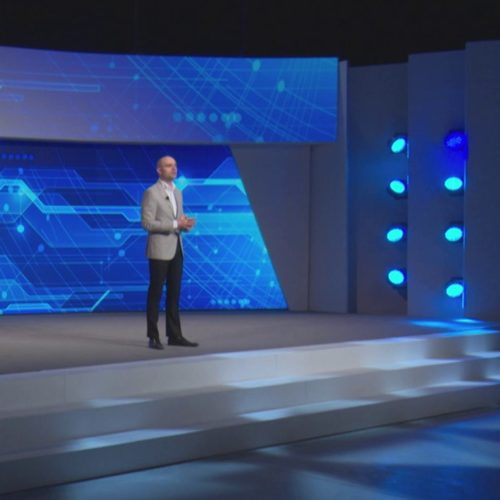Chatbots – The New Retail Banking Frontier

Life of the modern Homo sapiens revolves around money and tech. That is why the banking industry is always the first one to adopt the latest trends. A decade ago the digital banking put an end to the three-hundred-year-old ‘tradition’ of waiting in queues.
Today, we can run accounts ourselves, and use banking services without stepping foot into an actual bank. For customer service, the eBanking was a huge leap forward, but it has caused an unsettling feeling in the Customer Support departments across the globe. Where do we go from here?
The customer expectations went wild in the last couple of years. This trend was confirmed by Deloitte’s Reshaping the Retail Banking Experience – For the Customer of Tomorrow study. They describe future consumers as well-informed, connected, a bit skeptical and very demanding.
The financial institutions need to consistently feed clients with prompt service and treat them as the ‘bank ambassadors.’ Customer service is already the most important stage of the banking sales funnel. Well-versed representatives can keep the clients loyal, even when they are not completely satisfied with the offer they are getting.
Unfortunately, good customer service representatives are hard to find. The art of Customer Service and sales requires lots of practice, and most talents go further up the management chain or transfer to other departments after they acquire all the necessary skills. Why would anybody spend their whole career collecting clients’ information? Apparently, chatbots don’t have a problem with that.
Chatbots – the first step towards smart customer service
According to the Jim Marous’ Improving the Customer Experience in Banking report, one of the crucial priorities for improving the ability of financial institutions to meet consumers’ demands is the implementation of advanced analytics, machine learning and contextual engagement to provide a highly personalized experience.
Chatbots are currently the most popular form of customer service tech. They allow banks to rely on small and highly skillful customer service teams, by taking over the initial phases of customer interaction. They also conduct all the repetitive tasks like account registration, authentication, card cancellation and client onboarding. All the boring stuff.
How are chatbots different from online forms?
Today, the online interaction between banks and clients usually goes through online forms. Although they are incredibly practical from the customer service point of view, forms always need to have a live support channel. No matter how simple the form is, there are always clients, who won’t be able to understand it.
Filling out long forms can be tiresome and irritating. We all hate the judgmental red letters that show up after clicking the submit button. Contrary to online forms, chatbots use more subtle methods for extracting clients’ data. Apart from the regular conversation flow, they come with user input, quick answer, and menu features and therefore are the ultimate solution for simple client interactions in the banking sector.
Conversational banking
The time when automation was the most important priority in the banking industry is behind us. In the Digital Banking Era, when most banks have fully automated their client interaction, personalization is the frontier.
The concept of conversational banking is relatively new, and it is based on the growing possibilities of artificial intelligence. Free conversation flow gives clients the control over the interaction and allows them to get the needed information, without following predefined navigation and forms.
The latest chatbots can be easily programmed to recognize and use the clients’ language and provide them with state of the art support in real-time. Companies can easily incorporate long FAQ texts into chatbot scripts with tools like Botdesk.
Most platforms allow builders to program bots to respond to the different versions of the same question, as well as synonyms, colloquialisms, and slang. Some platforms also offer predefined bot templates that make the dialogue generation much easier. For example, the Snatchbot platform provides a banking template with pre-made bot statements that lead users through the process of loan and credit card application.
Other benefits chatbots bring
Apart from their chattiness, bots offer many other benefits to banks and their clients. These include:
- Real-time support at any time of the day. Only for this feature banks would need to employ at least four customer support representatives, organize their shifts and pay the overtime.
- Support and banking services on many different channels at once. One chatbot can engage clients on the bank’s website, app, social media and messaging apps.
- Relevant and up-to-date offers for different consumer groups. Chatbots can choose which plans to offer depending on the data they extract during the conversation.
- Banks can build relationships with their clients through chatbots, instead of relying on the one-sided communication.
- The simplicity and affordability of chatbot creation can also be viewed as a benefit since there are dozens of building platforms that can be used free of charge.
The chatbot revolution is here!
Several big banks have already put chatbots in use. These are just some of the financial institutions that have realized the advantages of artificial intelligence:
- Bank of America – Later this year BofA will release their first chatbot called Erica. It will help users to deal with their debt and save more money.
- JPMorgan Chase – Instead of launching their COIN bot for the public, JPMorgan Chase has used it for improving the efficiency of their back-office operations. In only one year, COIN saved more than 360,000 work hours.
- Capital One – The company has already launched two virtual assistants. The latest release is called Eno, and it answers customers’ questions concerning payment history, transactions, and credit limits.
- American Express- AmEx uses Facebook Messenger bot to make their clients’ life easier. The bot sends purchase notifications in real time and helps customers to link their cards with Facebook accounts and use them for in-app purchases.
The use of artificial intelligence in banking goes far beyond chatbots and their capabilities. Still, the wonders they do for client engagement has turned them into a customer service game-changer. The bot creation is a worthy investment for banks of all sizes, and that is the least we can say about the technology that has managed to turn customer service work into a friendly chat.
About the Author:
 Branislav Srdanovic is a copywriter, who enjoys building chatbots in automated platforms and code-based frameworks. My bots are live, chatty and incredibly human-like. In my spare time, I write articles about the benefits of A.I. and explore new industries my chatbots can target.
Branislav Srdanovic is a copywriter, who enjoys building chatbots in automated platforms and code-based frameworks. My bots are live, chatty and incredibly human-like. In my spare time, I write articles about the benefits of A.I. and explore new industries my chatbots can target.








